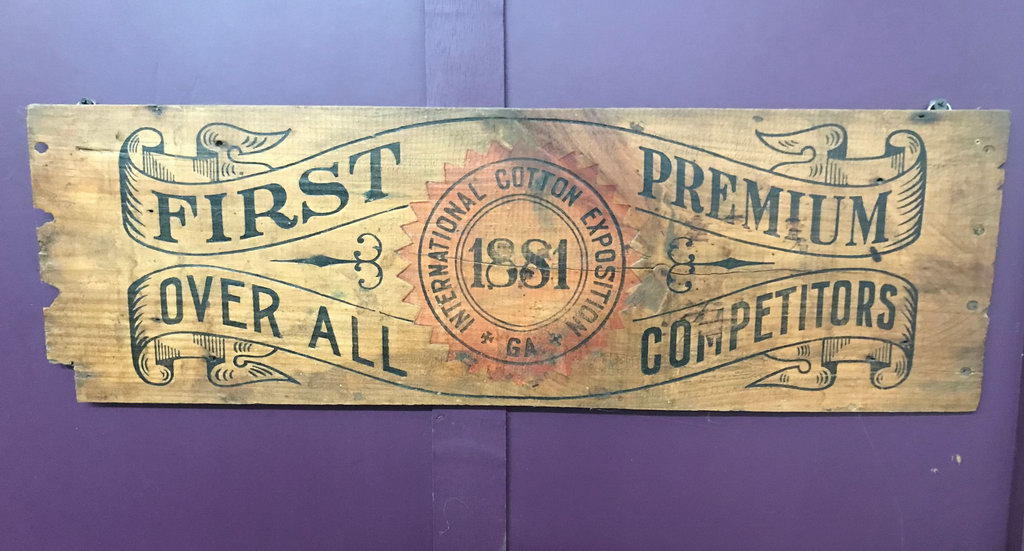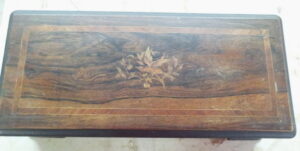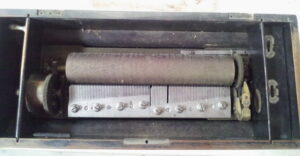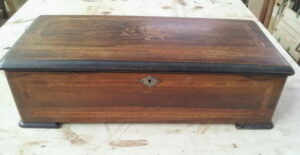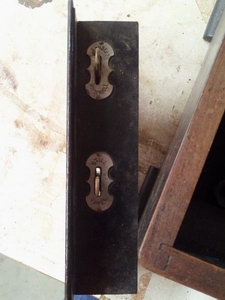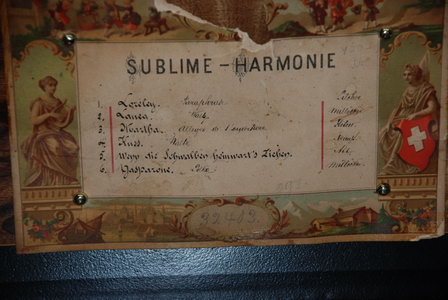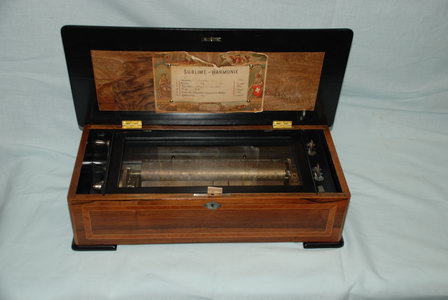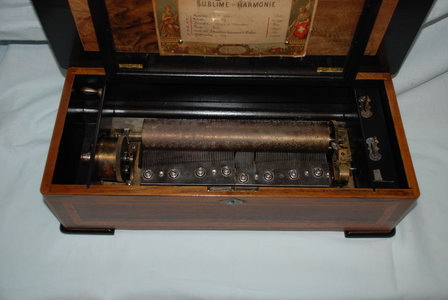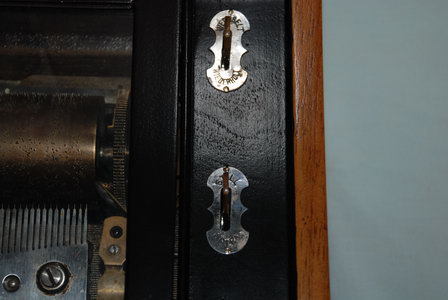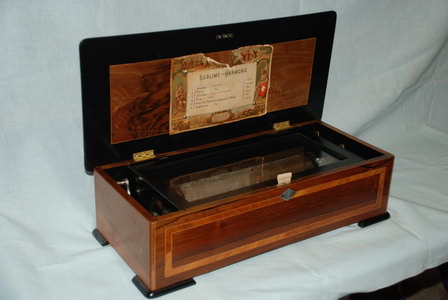Over the years we have had many a family heirloom come to the shop with untold types of home repairs. Some really well done, some really, really bad. Lots of people feature themselves as “handymen” (or women) and I am no different. As I have said in the past, my family has a history of doing things, rather than paying to have things done. So, I guess it is in my nature to fix things. I make many repairs at home to things unrelated to woodworking. I do have other skills!
It has always been interesting to see how people have repaired their furniture, and we get to see it up close and personal. One of the first tasks for us when repairing or restoring a piece, is to undo most of these homemade repairs. This sometimes adds hours to the restoration or repair process. It’s common to spend more time undoing a bad repair than it takes to make the repair correctly.
Here are a few things we regularly see;
Tin can lids were commonly used to repair mouse holes in drawers. This most likely was done in rural areas where rodents were a constant irritant. Forty or fifty years ago, cans were made with metal that rusted, that’s another clue to the age of the repair. Since most people don’t cook anymore, we don’t see too many modern repairs made with food containers.
Another common attempt to keep mice out of clothing was screen wire. You know, the stuff that used to be on the outside of your windows to keep bugs out. Hundreds of dressers and chests have passed through the shop requiring removal of the rusted window screen from the bottom.
Cardboard boxes have been used extensively to cover the backs of mirrors.
Metal plumbing strap, or hose clamps, make a great tool to hold a broken leg together.
A piece of plywood will replace the springs in a chair or sofa seat and keep you from falling through. I once removed 67 screws from such a seat in a sofa before we could repair the broken frame.
Nylon stockings (before pantyhose) were woven into the backs of a couple of cane back chairs when the cane began to break. You can see the rockers on the front page of our website. In this case, the lady that owned them was really making do with what she had. Her son had us restore them, and he remembers going to high school without shoes.
The backs and undersides of things have had an assortment of scrap pieces of wood nailed or screwed on to patch things together.
I won’t even get started on the variety of glues we see. That is for another post.
It is the scrap wood repair that brings me to the point of this whole ramble. A few months ago we restored a turn of the (20th) century oak bedroom set that was passed down through several generations. One drawer in particular caught my eye. Like many others it was patched together with a piece of wood. When we removed it, we could see it was imprinted with something. Years of dirt obscured the detail, but I decided to clean it up and see what it was.
Pictured below you can see that the piece of scrap was originally the side of a shipping container dated 1881. I don’t know what it held, but the manufacturer was proud enough of it to label it “First Premium”.
If you are a woodworker, you will recognize that the shipping carton was assembled with mortised and pegged corners. We cleaned it up and sealed the wood to preserve it as a curiosity. Interestingly enough, that shipping carton was made with higher quality material and workmanship than most furniture is today.
And they were just making do with what they had.

